Implementing Topic Clusters not only streamlines your Content Creation but also enhances its Search Engine Visibility and relevance.
Building on our previous discussion about Mastering Topic Clusters in SEO, this guide will delve deeper into how to build and Implement Topic Clusters.
While the foundational principles remain the same, the approach here will provide unique insights and actionable steps to Manage SEO Content.
Read on;
Table of Contents
- 1 — Significance of a Topic Cluster Content Strategy to a Website’s SEO Success
- 2 — A Step-by-Step Guide to Build and Implement a Topic Cluster Strategy
- 2.1 1. Deep Dive and Identify your Core Topic:
- 2.2 2. Conduct In-Depth Keyword Research:
- 2.3 3. Leveraging Advanced Clustering Tools:
- 2.4 4. Conduct an Enhanced Content Audit on your Website:
- 2.5 5. Strategizing Pillar Topics
- 2.6 6. Crafting High-Quality Pillar Page Content:
- 2.7 7. Designing Cluster Content with Precision:
- 2.8 8. Strategic Internal Linking:
- 2.9 9. Content Refresh Strategy:
— Significance of a Topic Cluster Content Strategy to a Website’s SEO Success
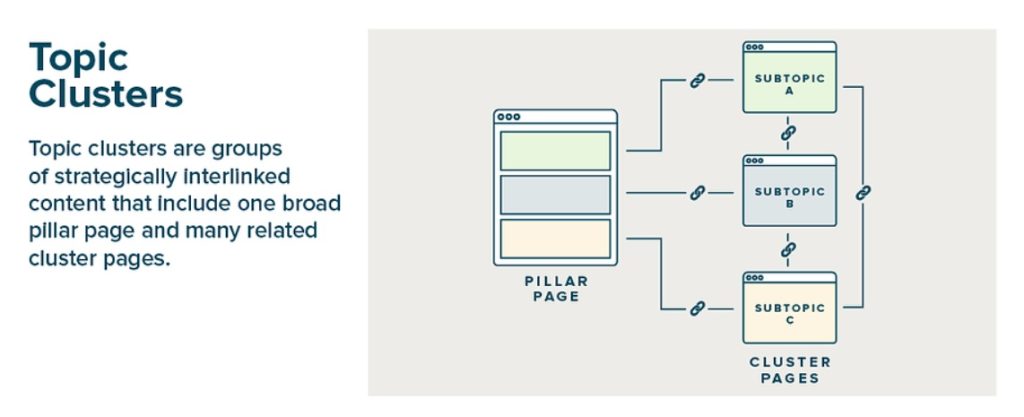
Topic clustering content strategies have emerged as a pivotal strategy in SEO because they align with search engines’ Best Practices, especially Google’s Quality Rater Guidelines (E-E-A-T).
Having evolved beyond merely scanning for keywords, search engines are now capable of assessing the Semantic Relationships between subtopics, including the answers to common questions users have when researching a particular industry.
By adopting a Topic Cluster Strategy, you signal to Google that your website possesses industry expertise, showcasing a breadth of valuable, in-depth Content.
Over time, this can enhance your topical authority, leading to Organic Traffic Growth.
— A Step-by-Step Guide to Build and Implement a Topic Cluster Strategy
1. Deep Dive and Identify your Core Topic:
The core topic is the epicenter of your Content Framework. It’s the primary theme around which all other subtopics and related Cluster Content revolve.

Truly understanding this core topic is not just about recognizing a broad subject but delving deep into its intricacies, relevance, and standing in your specific industry.
2. Conduct In-Depth Keyword Research:
When formulating a topic cluster content strategy, Keyword Research is more than just finding words.
It’s about understanding the pulse of your audience through their queries, their needs, and their entire online journey.

As such, it’s essential to consider various dimensions of a keyword when performing Keyword Research analysis:
- Keyword Search Volume: How often is a particular query searched for in one month?
- User Intent: Why is the user searching for this keyword? Is it for information, to make a purchase, or something else?
- Keyword Latent Meaning: Are there hidden or secondary meanings behind the keyword?
3. Leveraging Advanced Clustering Tools:
Ready with your detailed, comprehensive Keyword Research report, the next logical step is to group them by their semantic relevance, ensuring your topic cluster content strategy is both structured and impactful.
For this critical step, we will use Keyword Cupid to group our keywords into relevant topics.
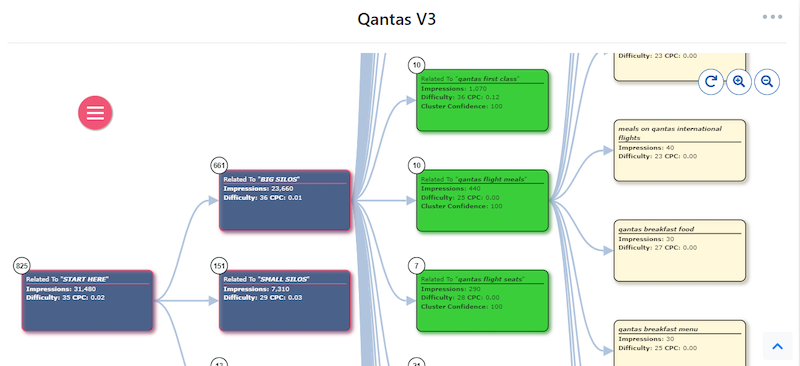
Keyword Cupid employs the concept of “silos” to bring structure and clarity to your keyword strategy.
In this context, silos refer to a hierarchical grouping of information, categorizing related topics under a broader theme.
A set of silos can be used to implement a Topic Cluster strategy on a website.
When you view it from a website’s hierarchical structure perspective, Silos form the basis of your entire topic cluster strategy.
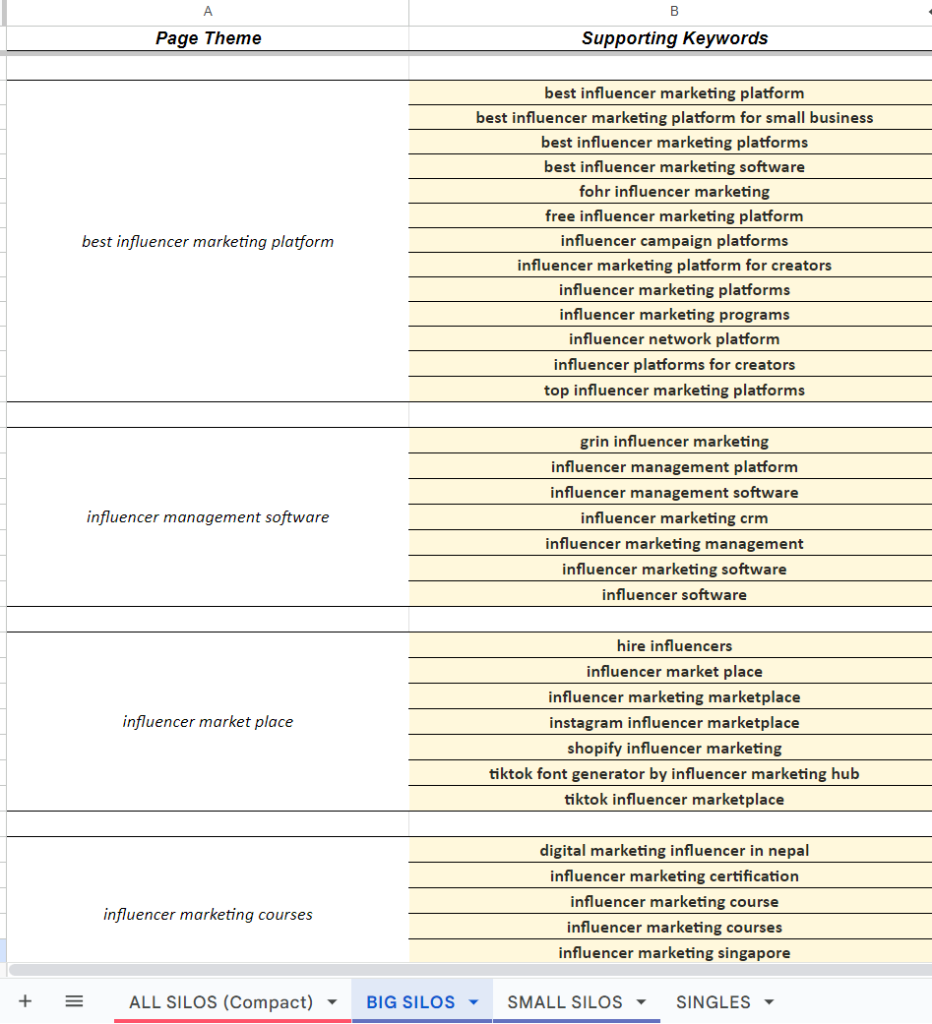
For instance, the page theme of a silo can act as a category on a website or represent a Pillar page, and its components could represent the Cluster Content.
4. Conduct an Enhanced Content Audit on your Website:
If you’ve previously published content, and you now want to shift your focus toward implementing a topic cluster strategy, a Content Audit becomes imperative.
Website Content Audit is about understanding the terrain you’ve already covered, identifying areas yet to be explored, and ensuring there are no gaps in your map.
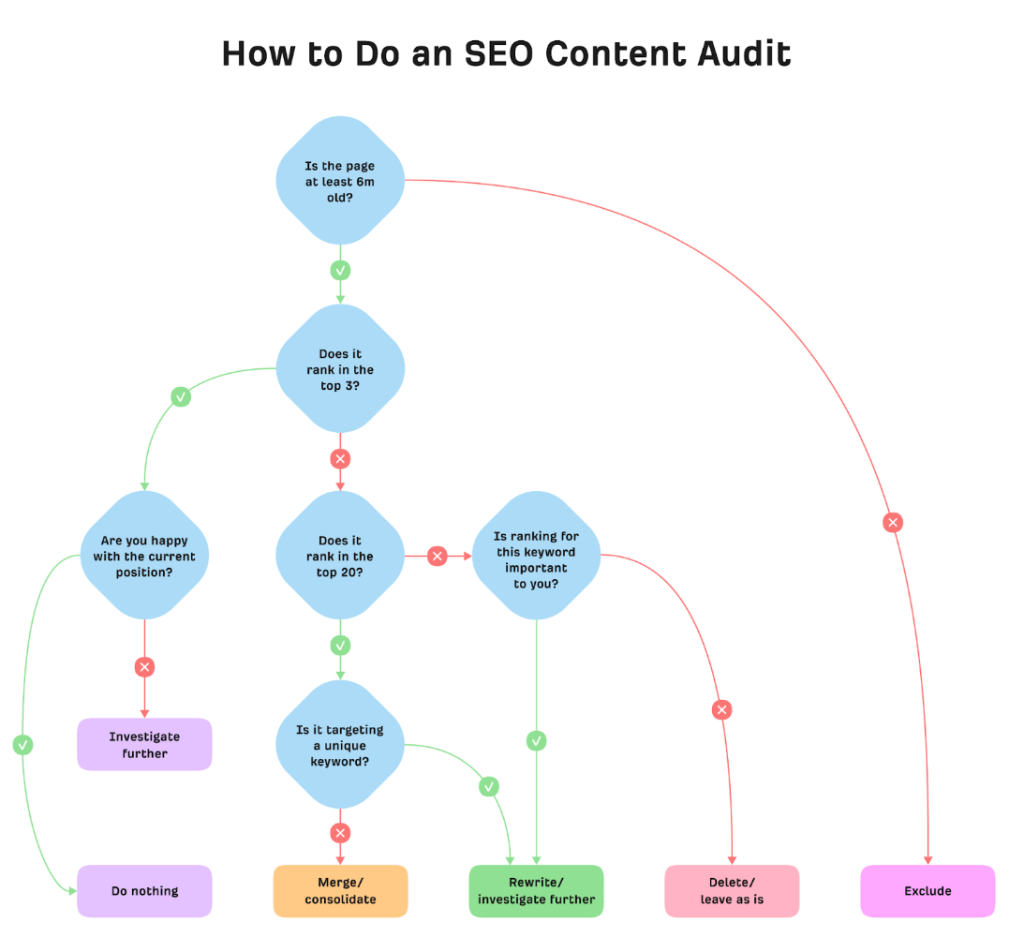
Start by going back to your Topic Cluster results, and reflect on any specific terms or subtopics related to the main topic that you’ve previously covered to avoid Keyword Cannibalization issues.
Some of your older content might be gold mines waiting to be rediscovered, and a Content Audit will lead you straight to them.
As such, repurpose wisely by reviewing old content, and where necessary, updating past blogs and articles with fresh content.
5. Strategizing Pillar Topics
Think of Pillar Content as the main chapters in a website’s Content Blueprint about a specific industry.
Each chapter provides a broad overview of a significant area, setting the stage for more detailed discussions in the subsequent sections or pages.
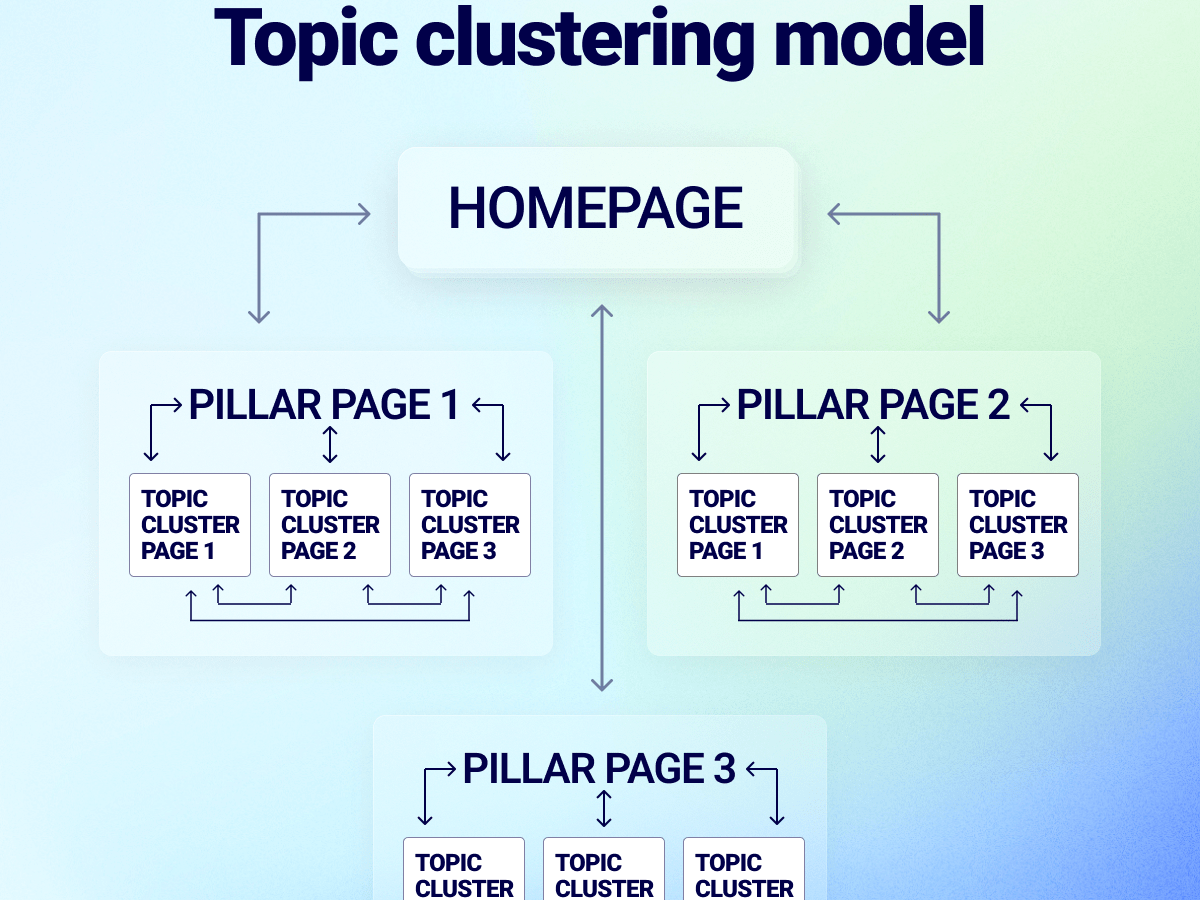
Beyond this, strategize on how they can be presented to offer maximum value.
Therefore, when choosing keywords for your Pillar Content, it’s essential to strike a balance between breadth and specificity.
The topic should be broad enough to encompass various subtopics, but not so vast that it loses focus.
Once identified, they will serve as the central hubs for your Content Creation, and surrounding them will be the related subtopics or Cluster Content.
6. Crafting High-Quality Pillar Page Content:
High-quality Content Creation is the backbone of any successful SEO Content Strategy.
It’s not just about creating content that ranks well in search engines, but also about providing value to your audience.
Starting with a comprehensive Pillar Content page, ensure it provides a comprehensive overview of the main subject (target at least 3,000 words), touching upon all its significant facets.
This page should be rich in information, answering general queries and setting the stage for more detailed discussions in the Cluster Content (sub-topics).
7. Designing Cluster Content with Precision:

Now, for each identified cluster topic, create in-depth content in the form of articles or blog posts. These should be well-researched, factual, and add unique value to the readers.
Additionally, ensure that the content is not just informative but also engaging, using visuals, infographics, and real-world examples where applicable.
Remember, these pieces will be built on more comprehensive supporting sections of what you mentioned on the Pillar page.
And most importantly, it’s critical to ensure that each copy is in tandem with the reader’s User Intent.
Ask yourself, does it precisely answer the meaning behind the target search query?
8. Strategic Internal Linking:
One of the hallmarks of a successful Topic Cluster Strategy is strategic Internal Linking.

You need to Link from your Pillar Content to each of the Cluster Content topics and vice versa.
This not only enhances SEO but also provides a seamless navigation experience for readers, allowing them to jump from a general overview to specific details effortlessly.
Beyond the basic linking, consider the entire user journey and design the Internal Linking in a way that offers the reader a logical flow of information, guiding them from a basic understanding to advanced insights.
9. Content Refresh Strategy:
Remember, all the traffic in the world doesn’t matter if you can’t convert it into leads, sales, or subscribers.
An effective topic cluster content strategy ensures that visitors stay on your site, engage with your content, and take desired actions.
This means planning periodic content reviews to ensure you remain up-to-date with the latest SEO Trends and emerging user needs.
Consequently, you need to update your content to reflect these changes, ensuring it remains a valuable resource.
CONCLUSION
A Topic Cluster Strategy is more than just a website content mapping tactic; it represents a structured and user-centric approach to Content Creation. By focusing on providing comprehensive coverage of a topic and its related subtopics, businesses can position themselves as authorities in their field, driving both traffic and trust.
Remember, the key to a successful SEO Content Strategy lies in understanding your audience, addressing their needs, and continuously evolving your content to meet the changing dynamics of search engine algorithms.



